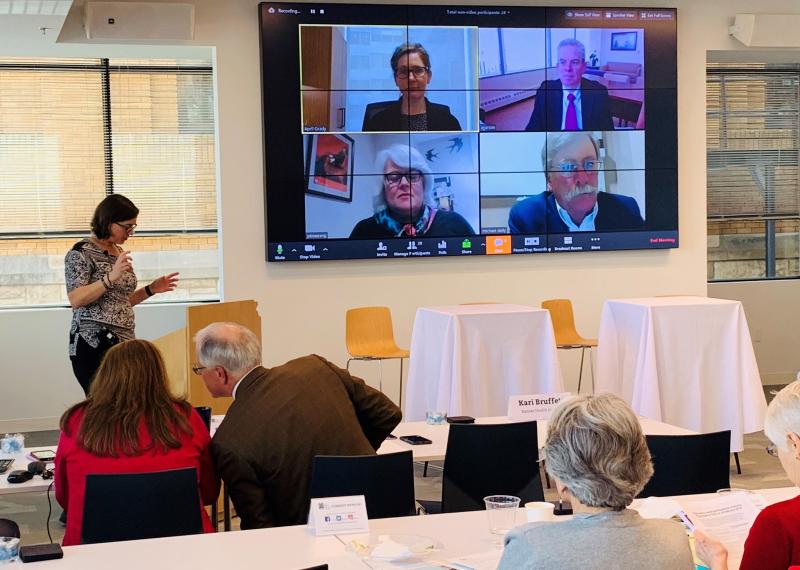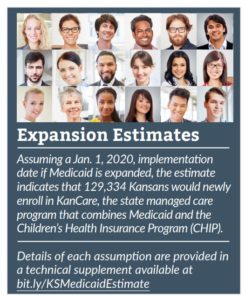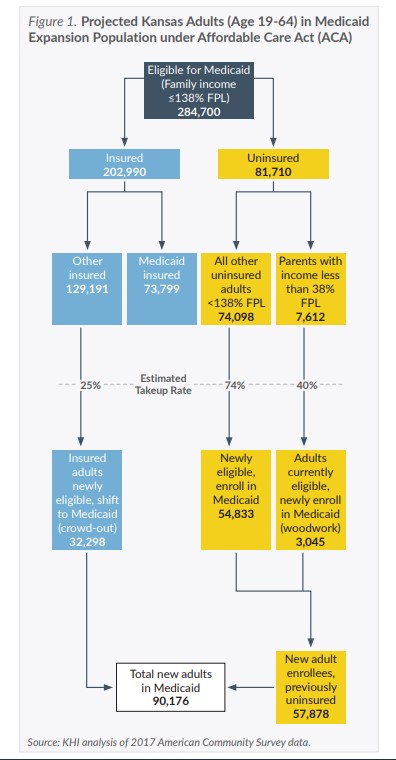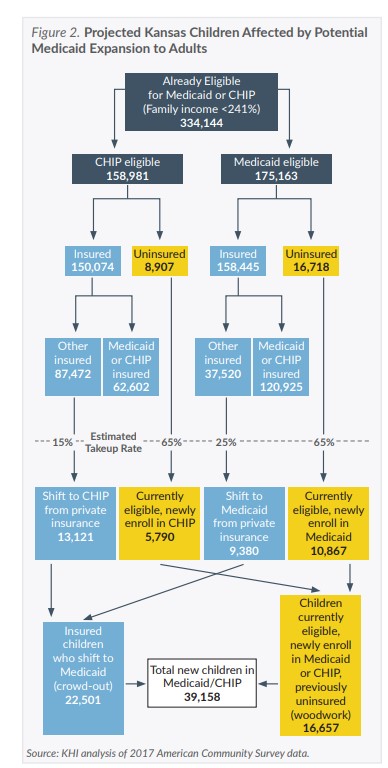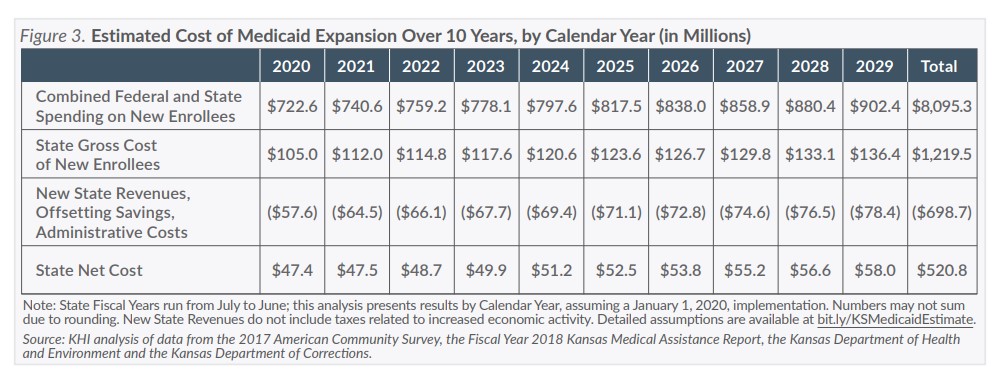Costs
The estimate assumes that the enhanced ACA federal match rate of 90 percent will apply to the new expansion group from 2020 on. Federal match rates for those already eligible for Medicaid and CHIP, however, change each year based on the relative economic positions of the states. This estimate uses the Fiscal Year 2020 Federal Medical Assistance Program standard match of 59.16 percent over the full 10 years of the projection for those Medicaid enrollees, even though that percentage may increase or decrease each year.
The estimate also assumes the CHIP enhanced FY 2020 match rate will be 82.91 percent, which includes the last year of phaseout of the enhanced CHIP match rate extended by Congress in 2018. In 2021 and thereafter, the estimate assumes a regular CHIP match rate of 71.41 percent will apply, even though that match rate too may change from year to year.
Per-enrollee annual costs are based on current costs in the KanCare program and are estimated to increase 2.5 percent each year, a factor intended to account for both cost and enrollment growth. The annual per-person costs for new enrollees in 2020 are estimated at $6,677 for non-pregnant adults, $10,853 for pregnant women, $3,411 for Medicaid children and $2,318 for children who would enroll in CHIP.
This estimate of net cost also includes assumptions of new revenues, savings from enrollees who would join the new expansion adult group rather than another eligibility group at a less favorable federal match rate, and additional administrative costs associated with a 31-percent increase in total program enrollment (from 416,000 to 546,000).
